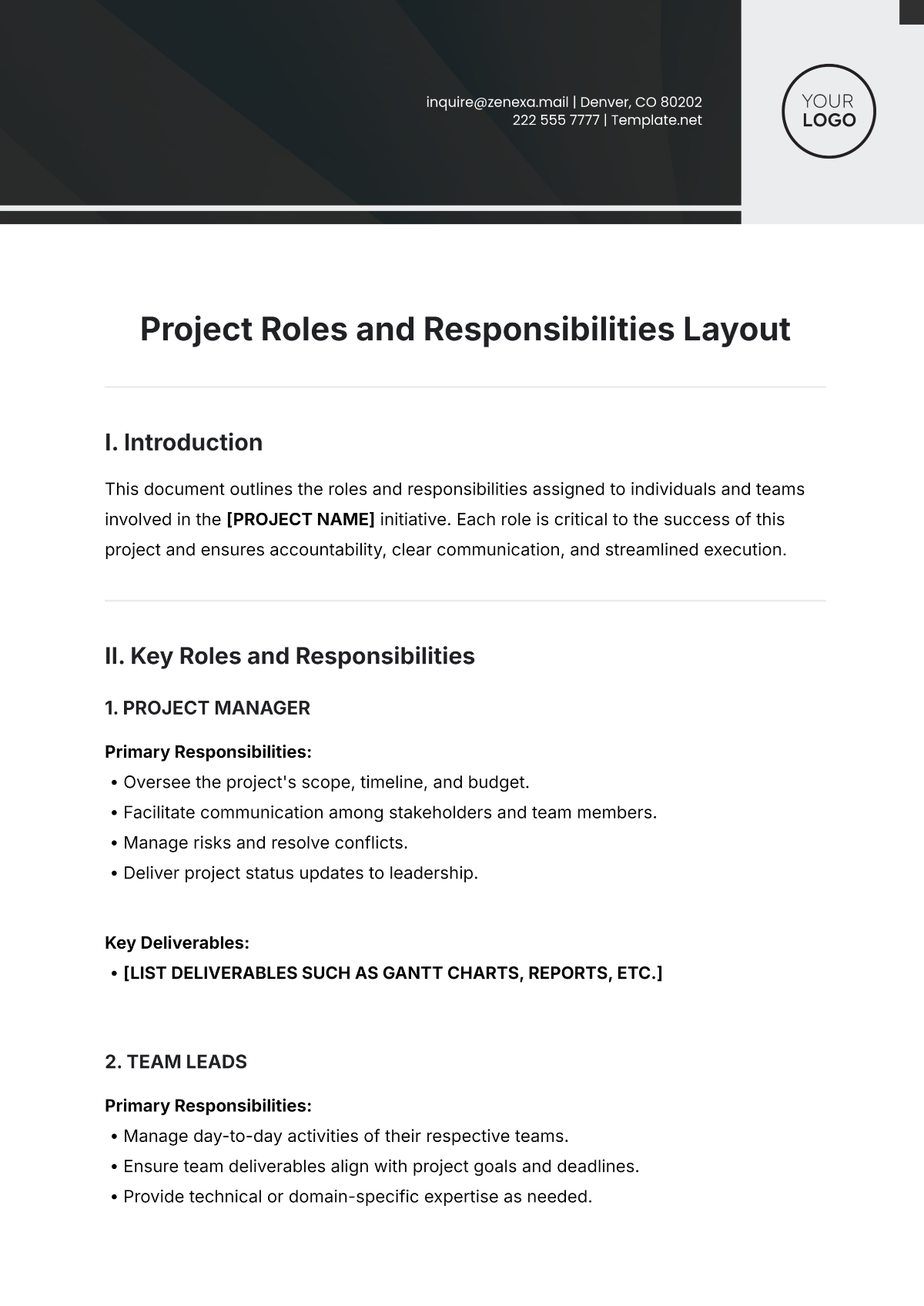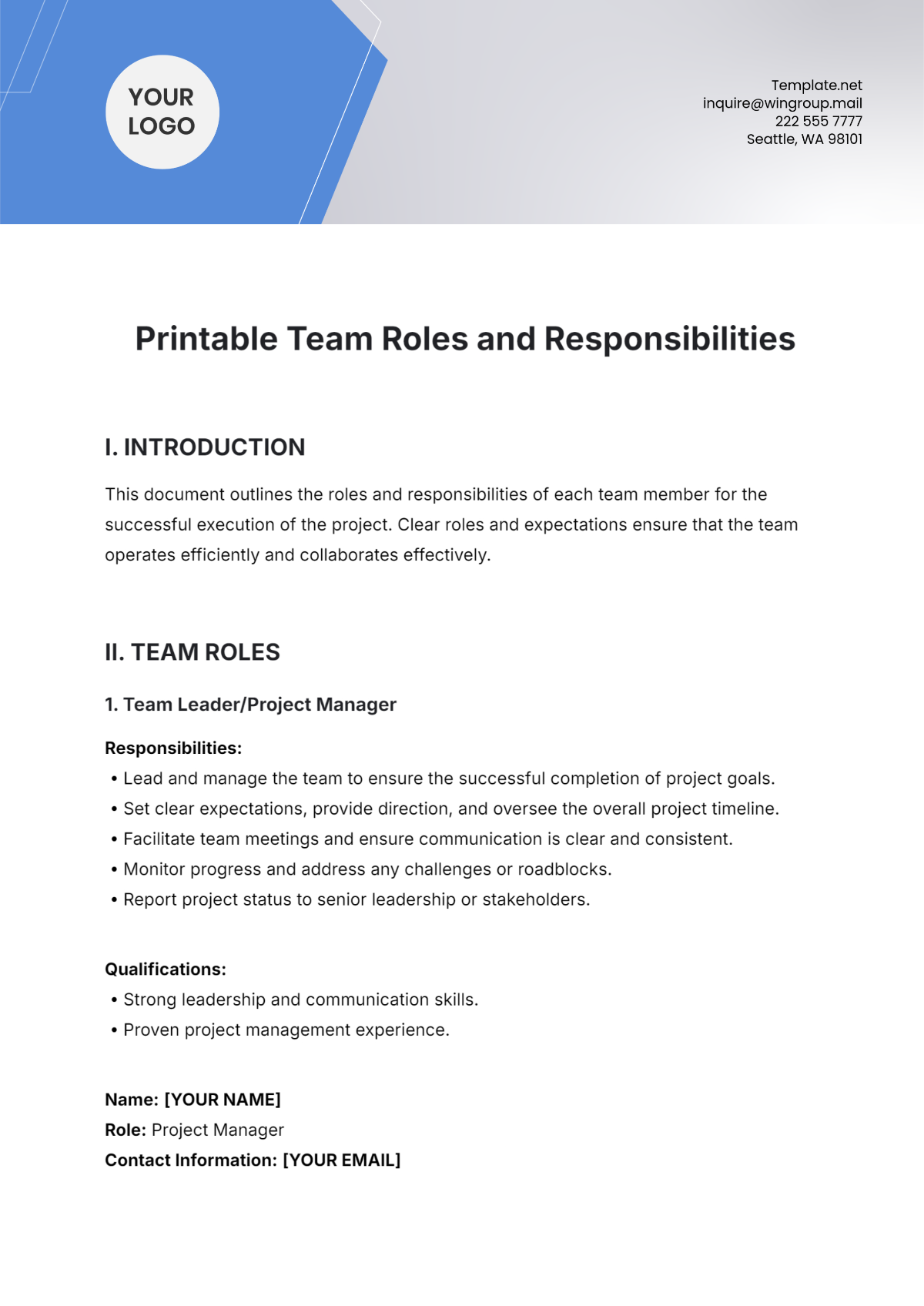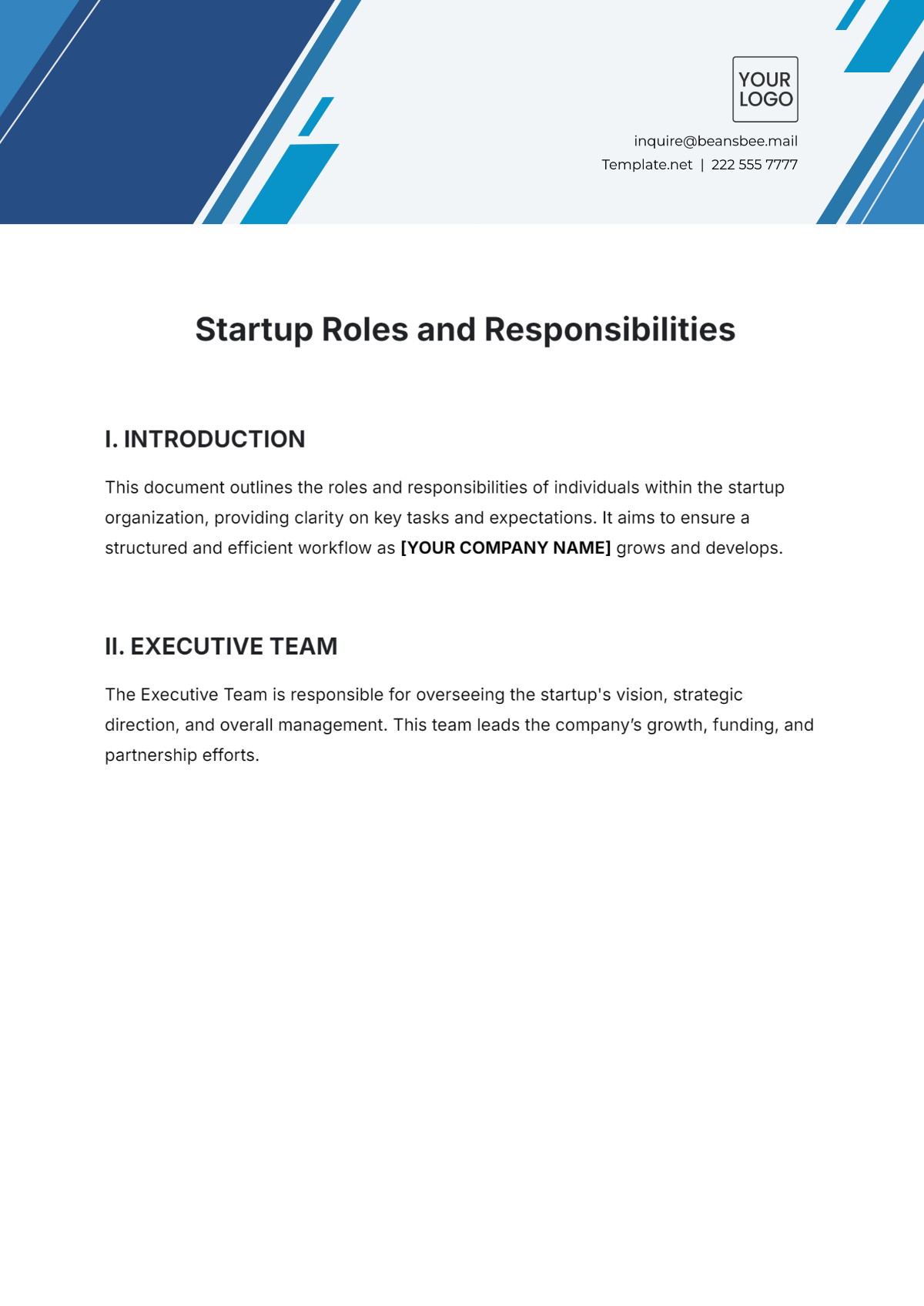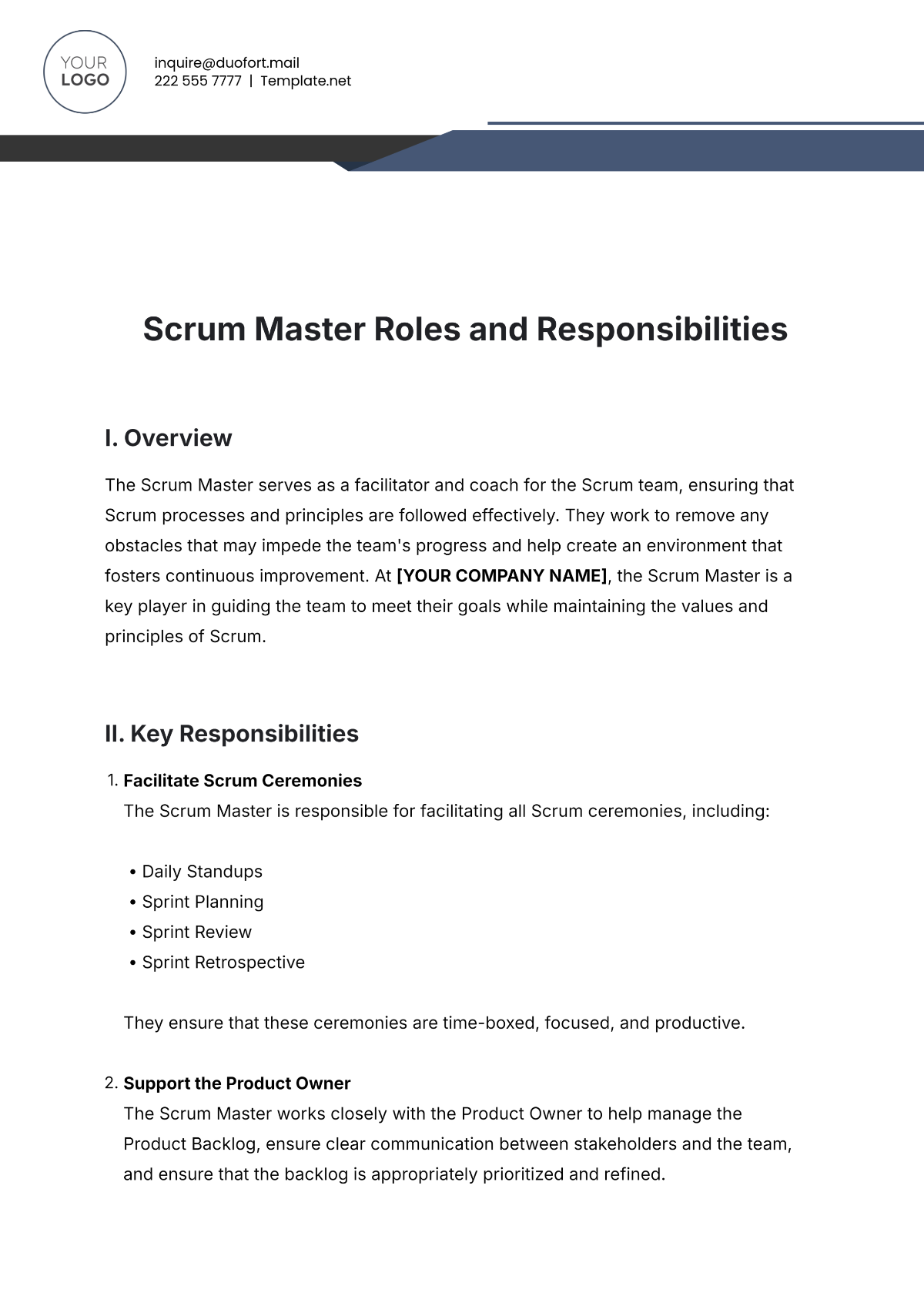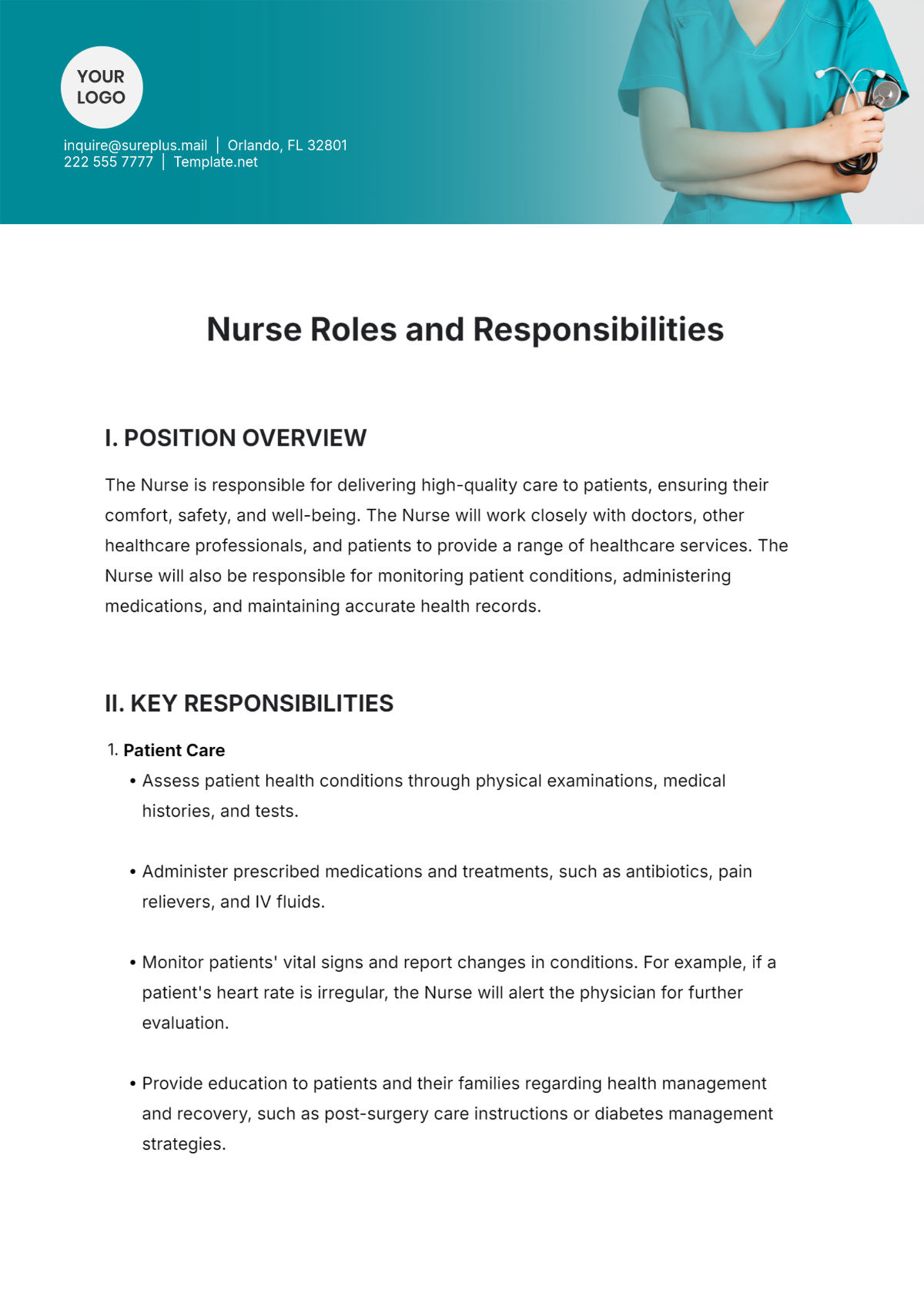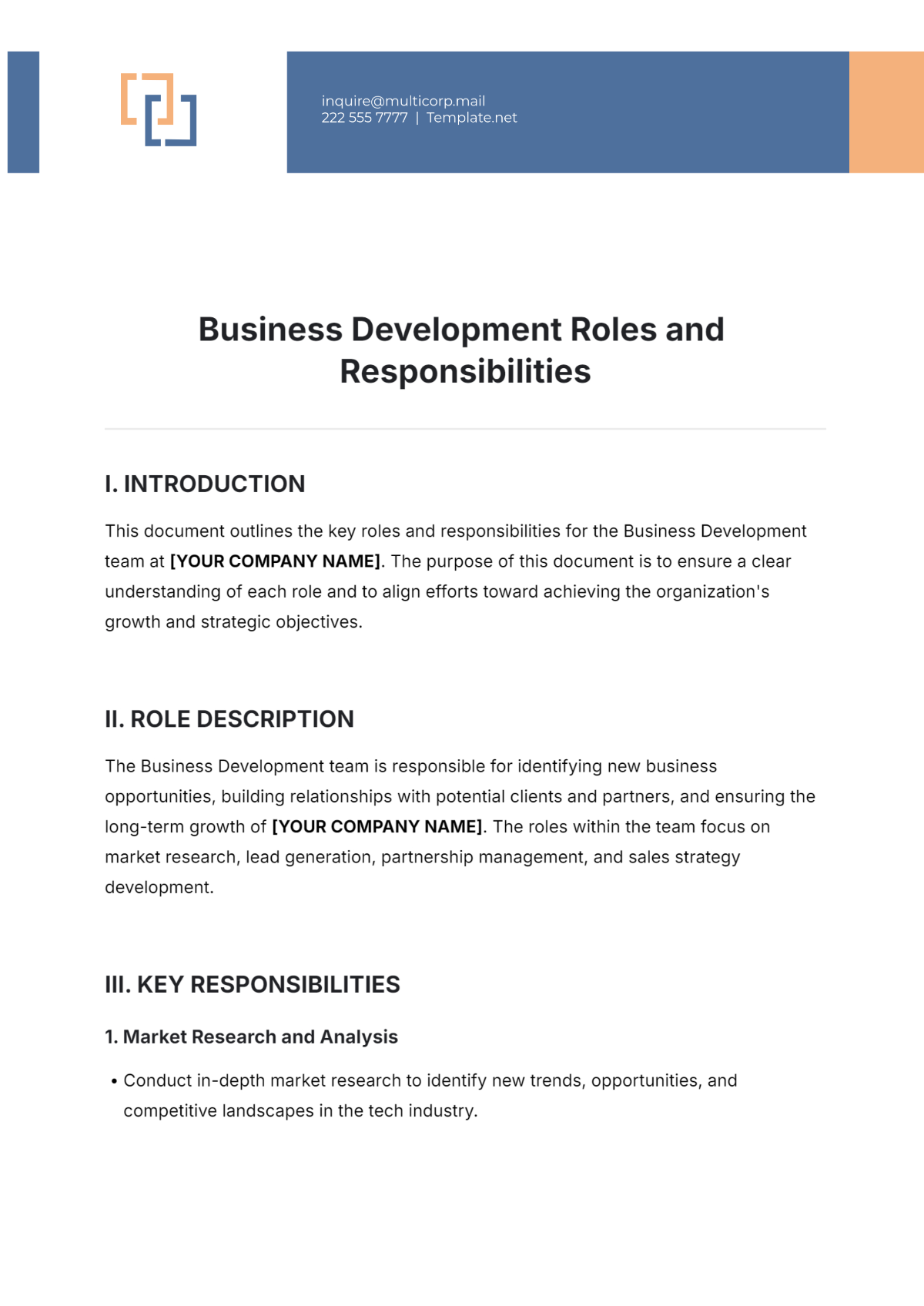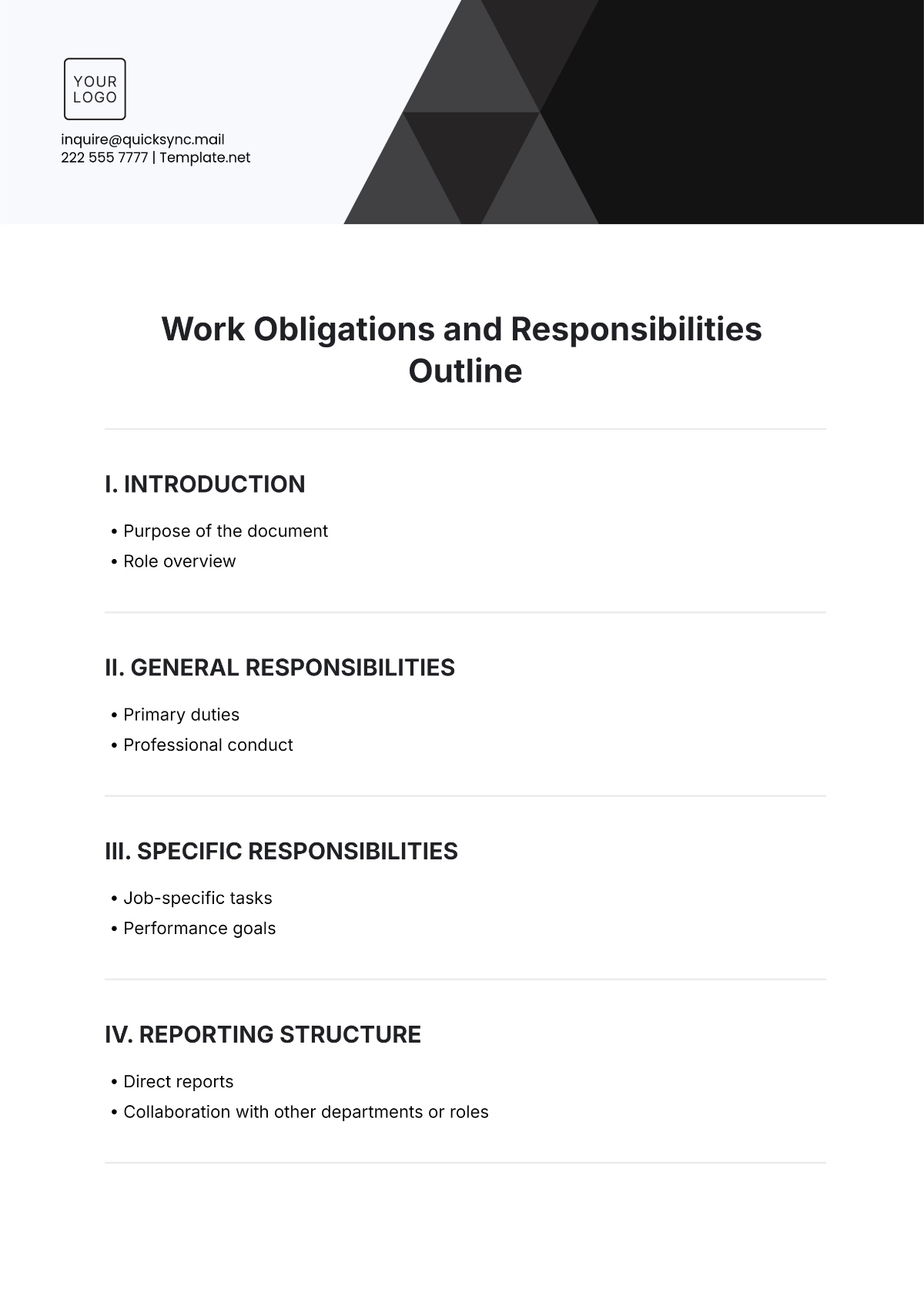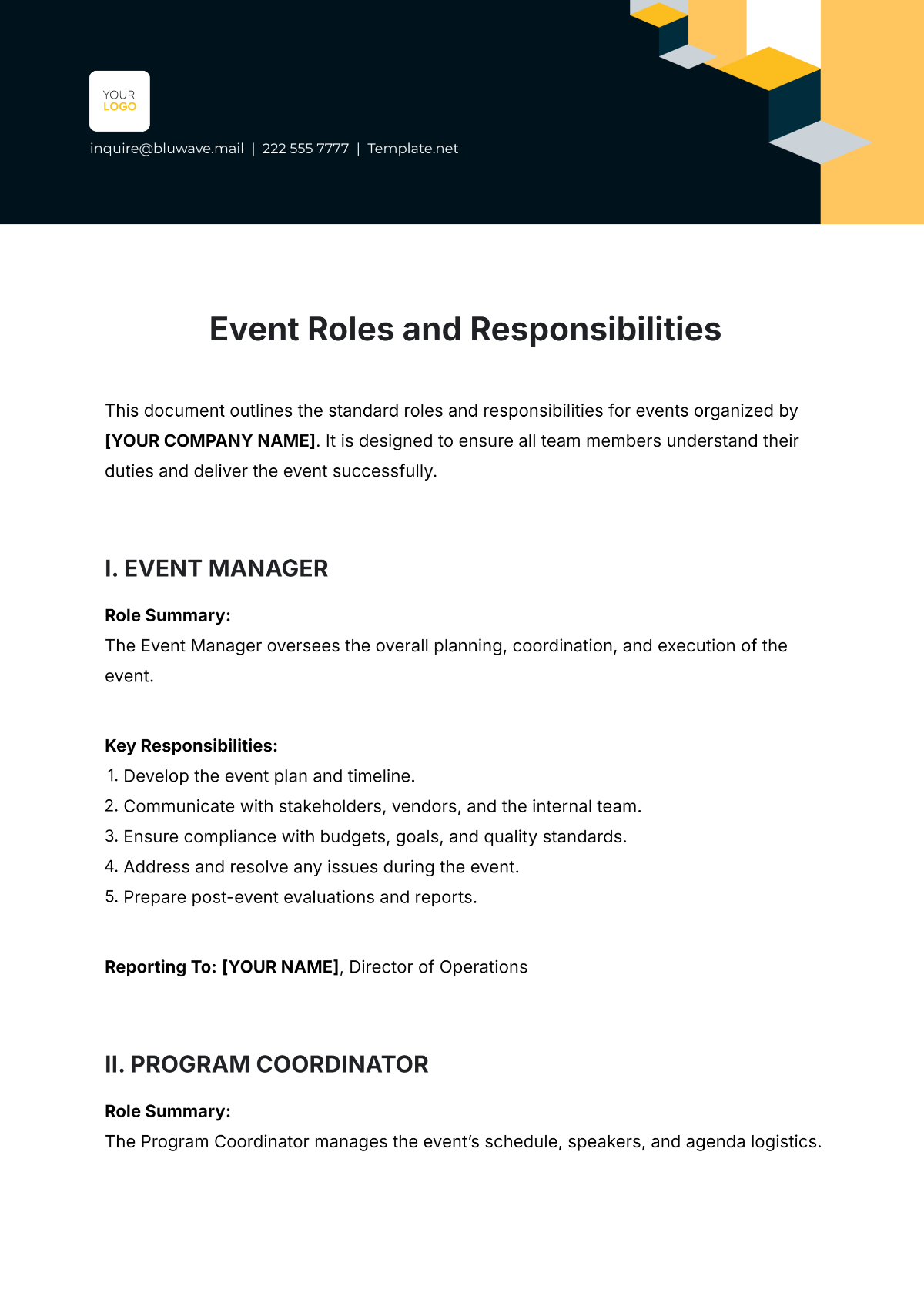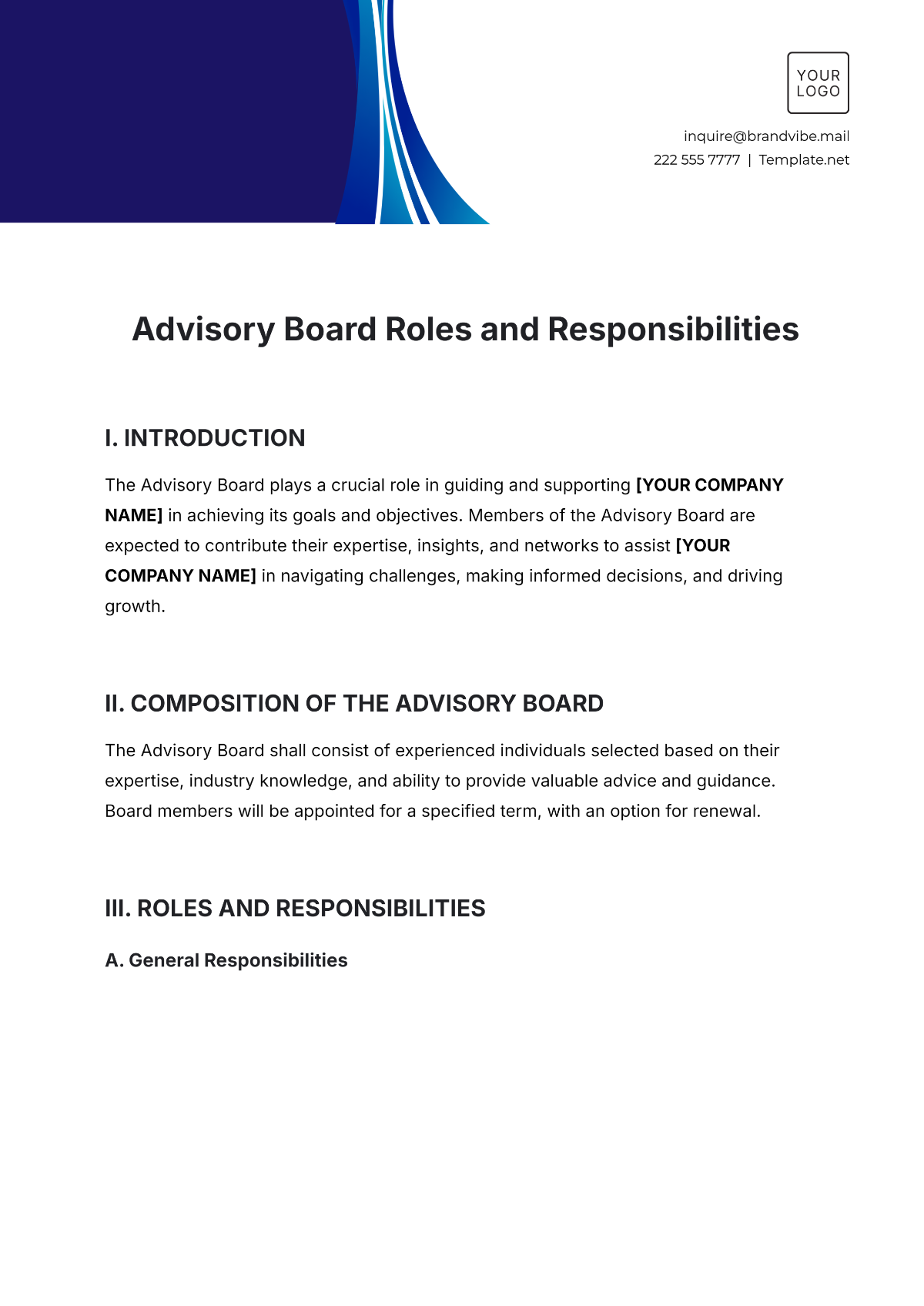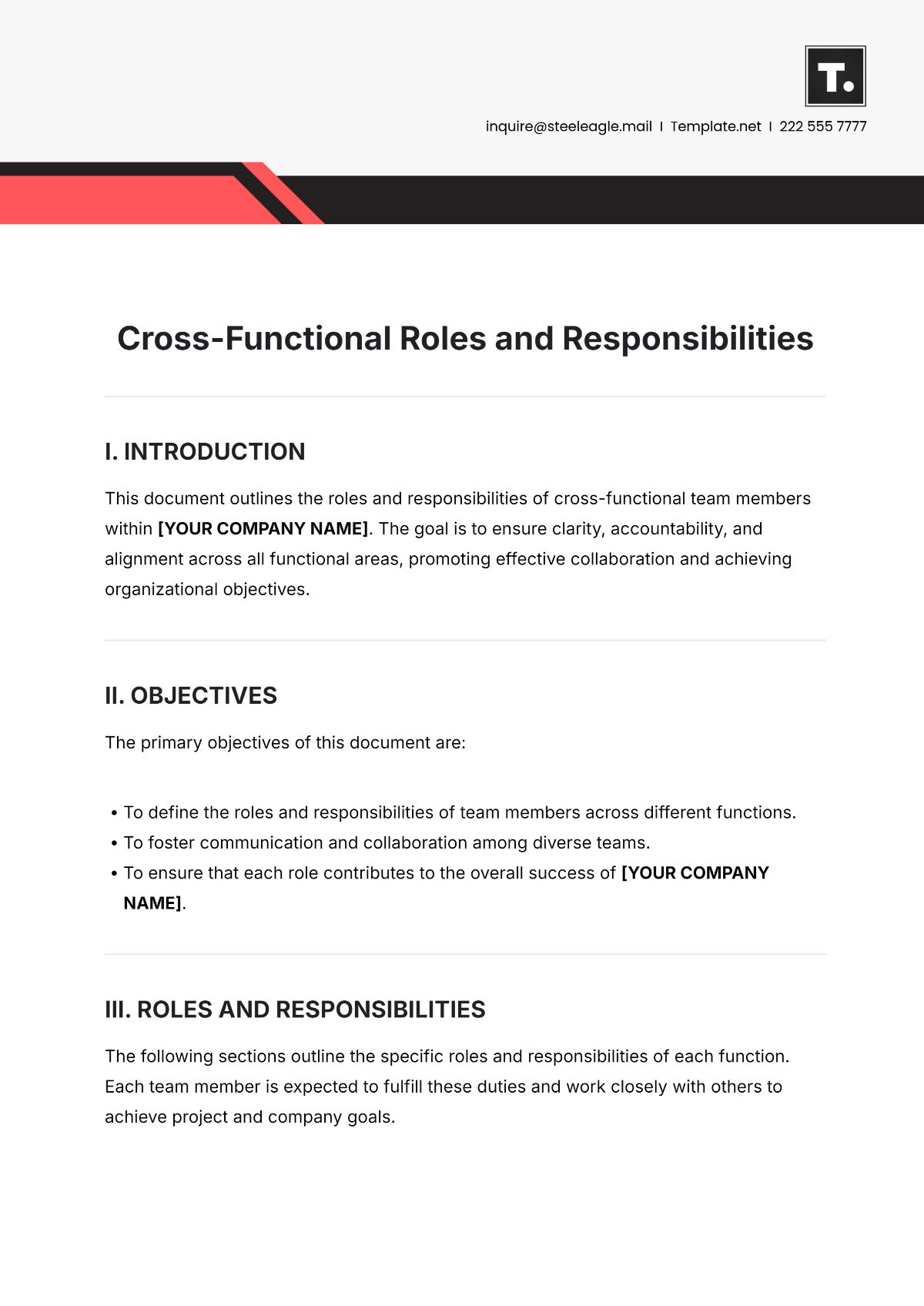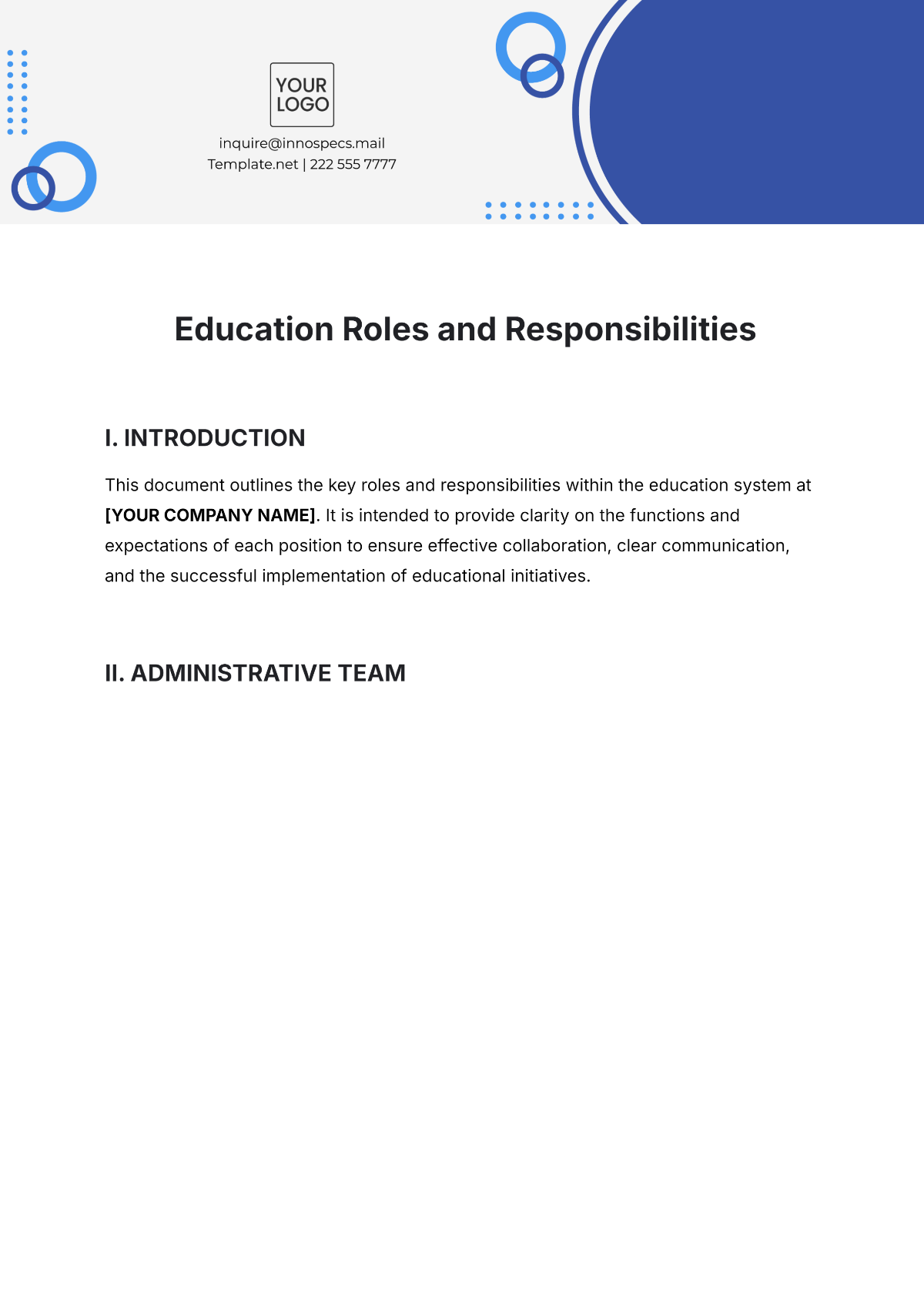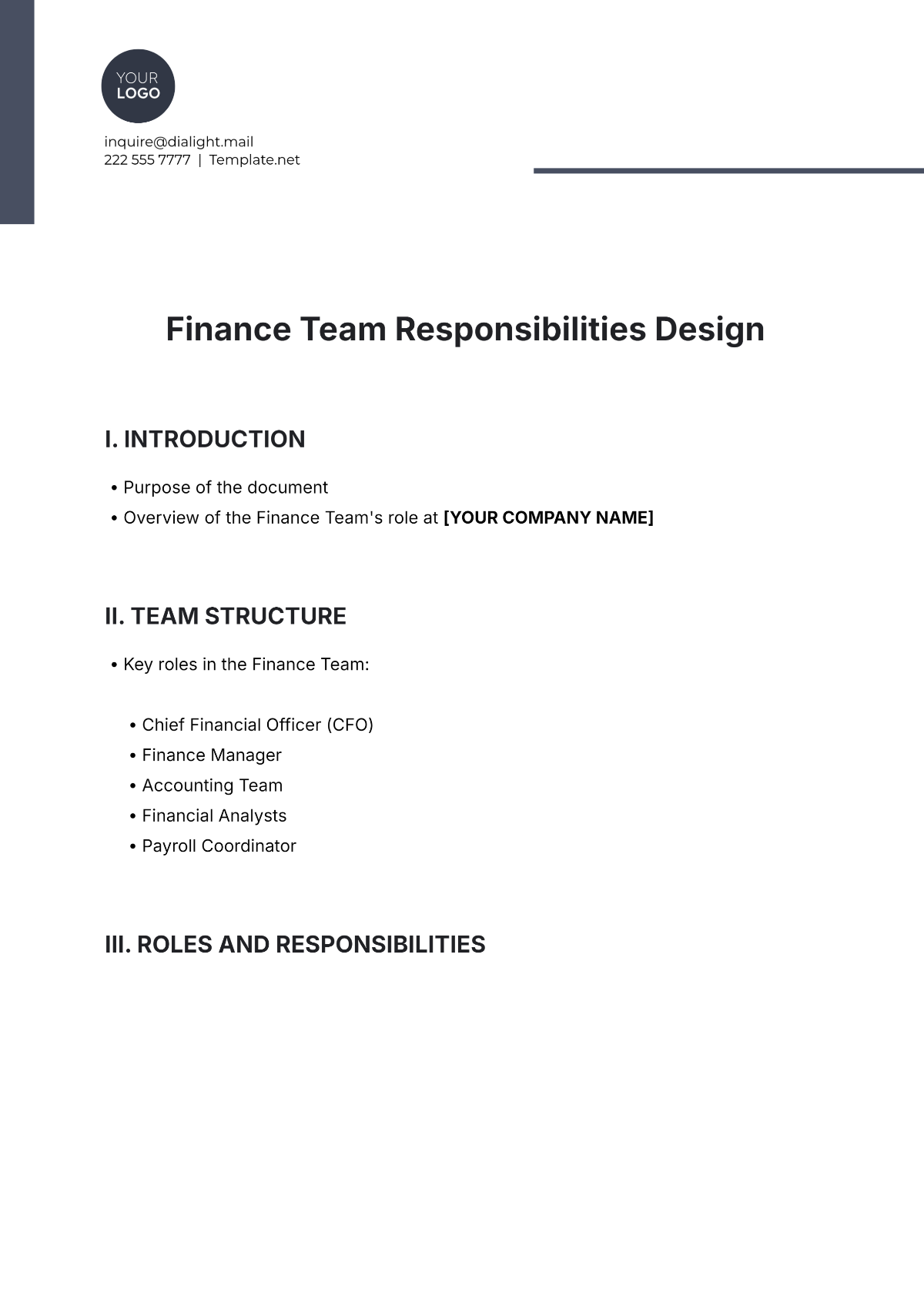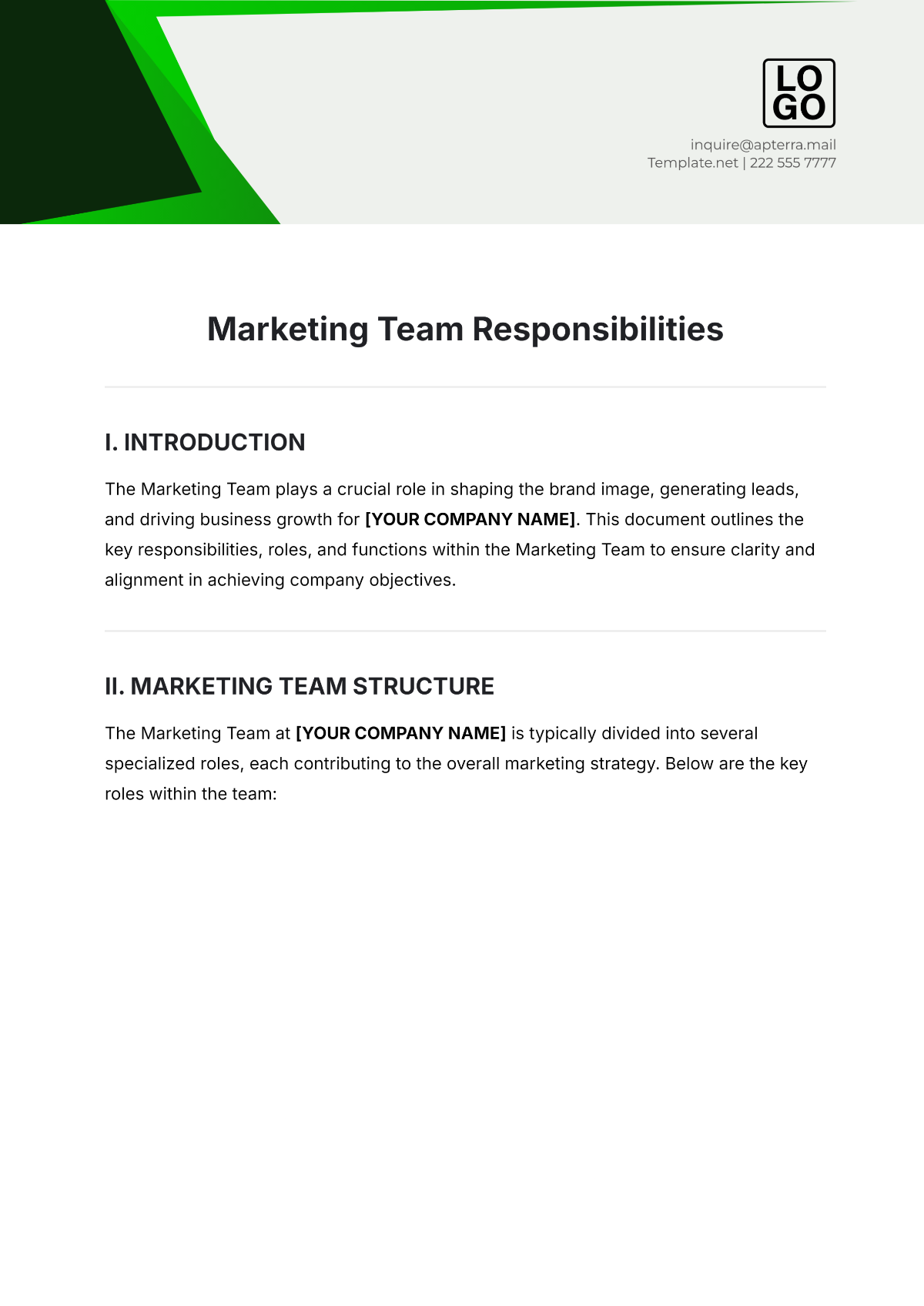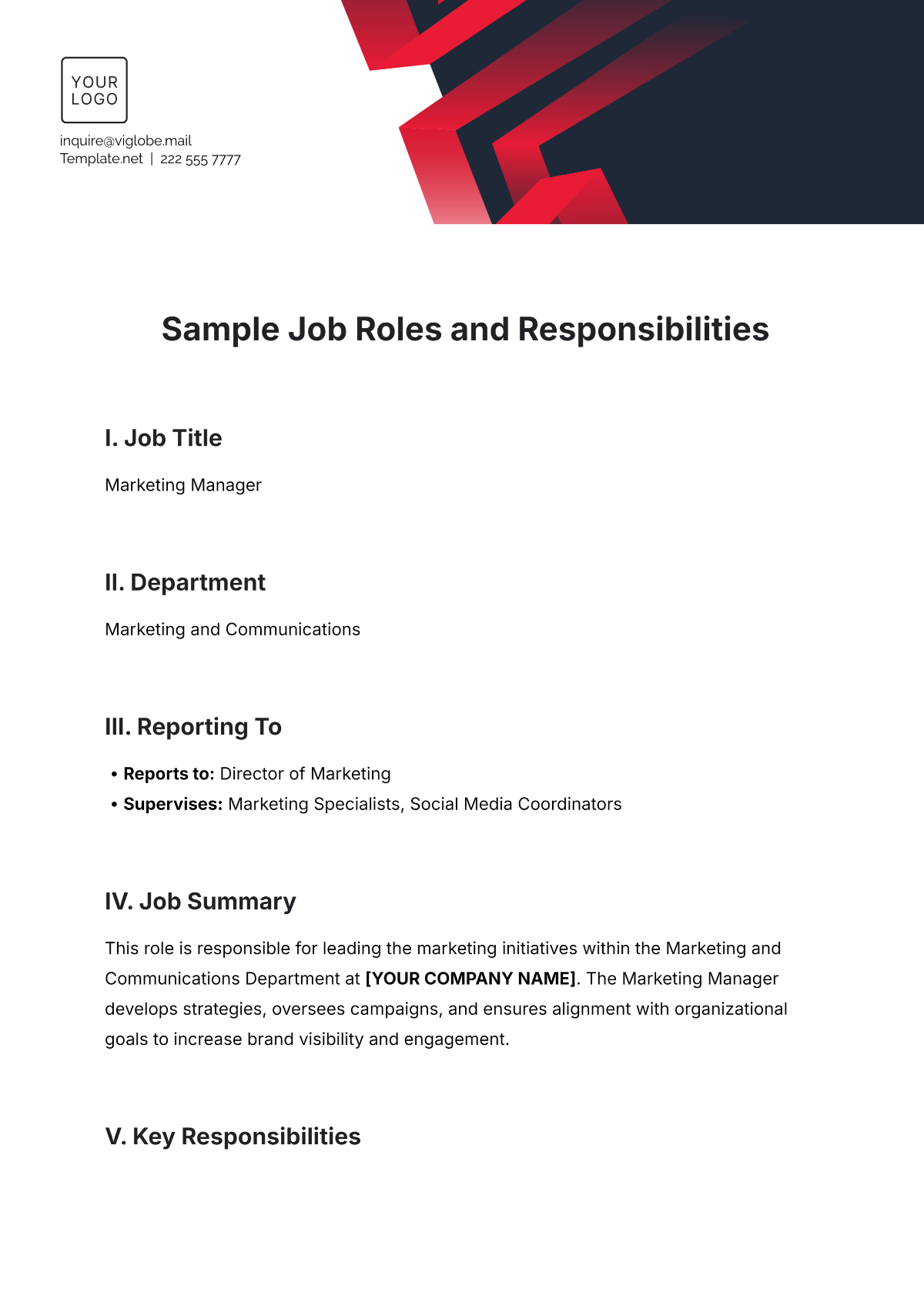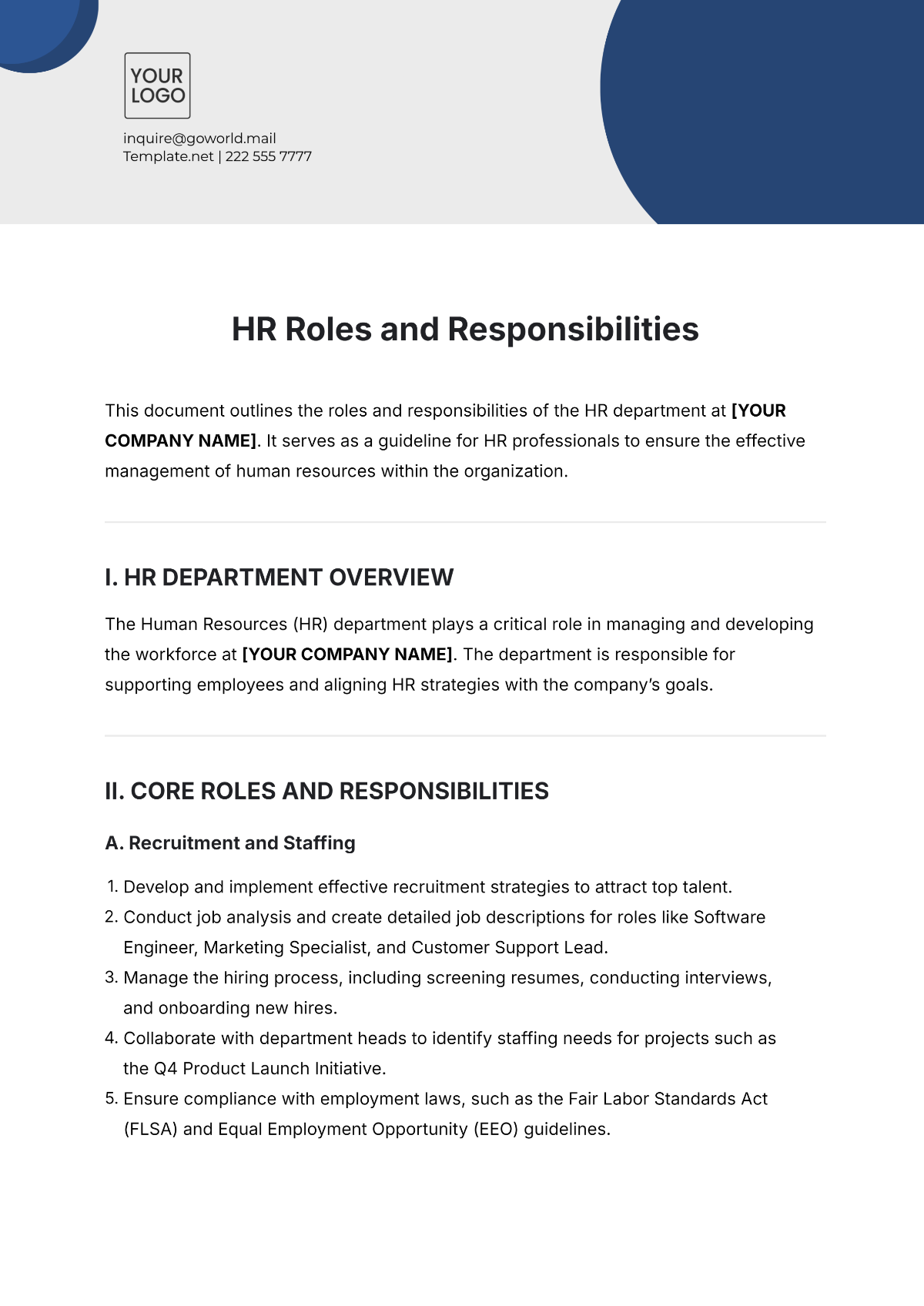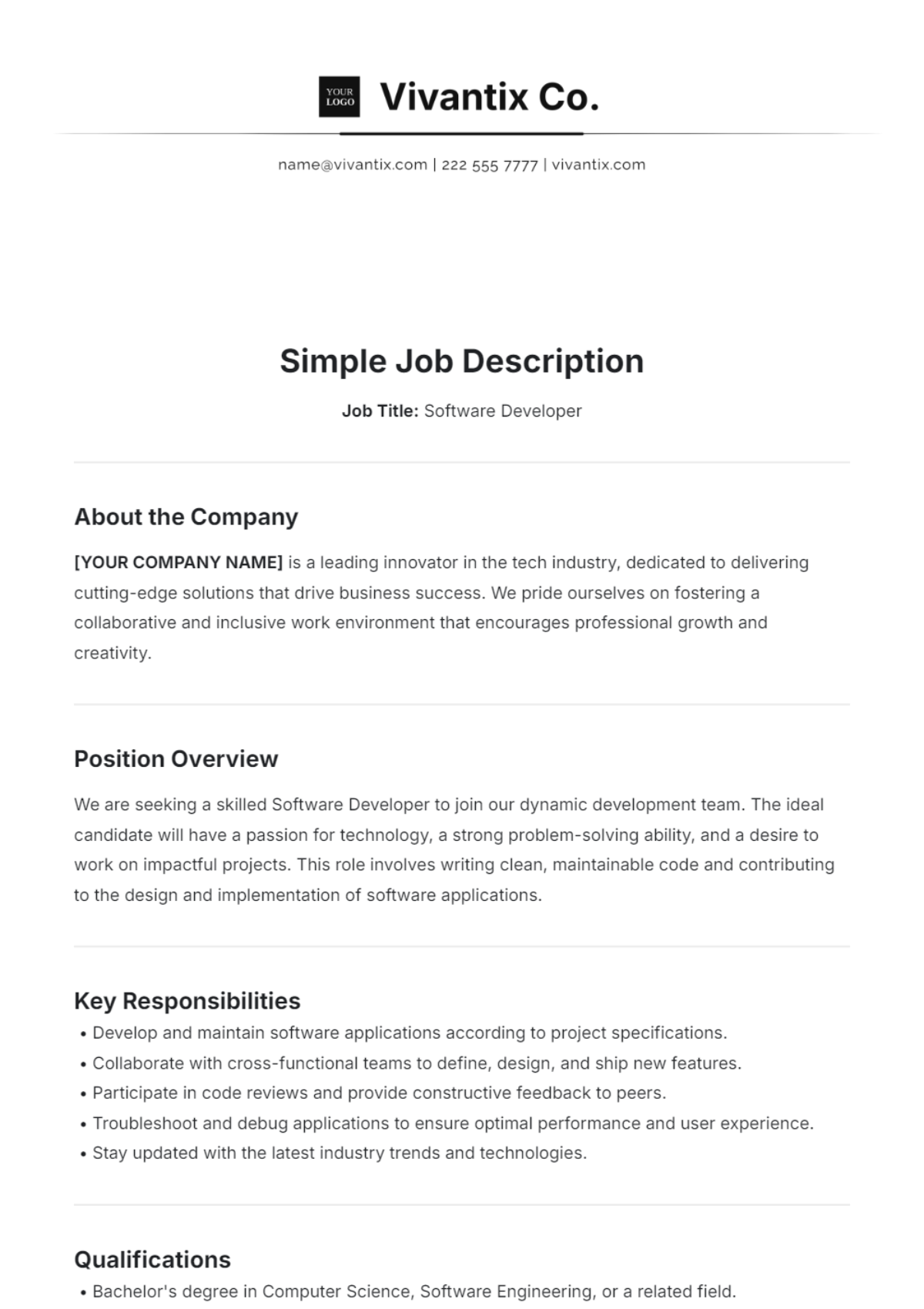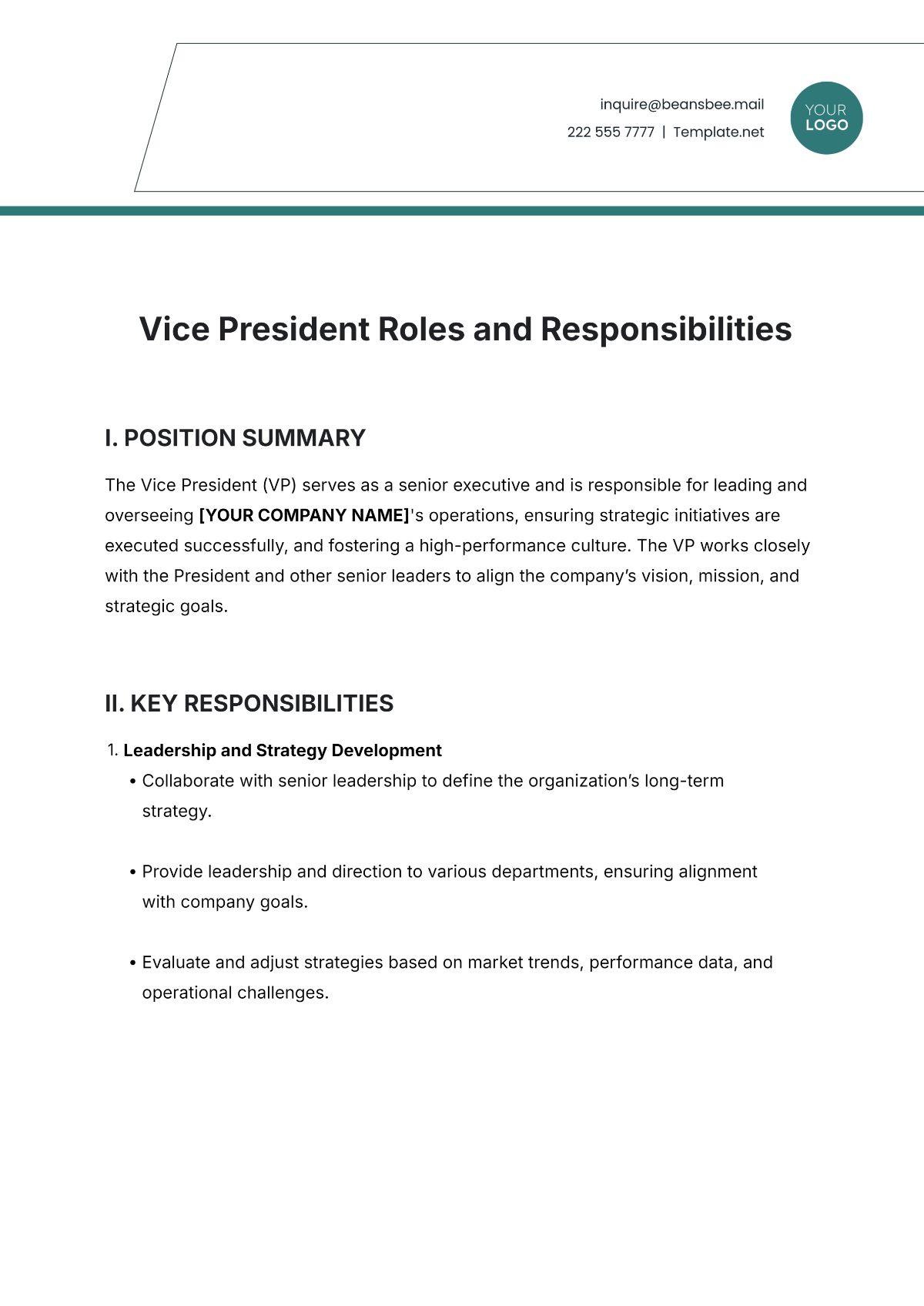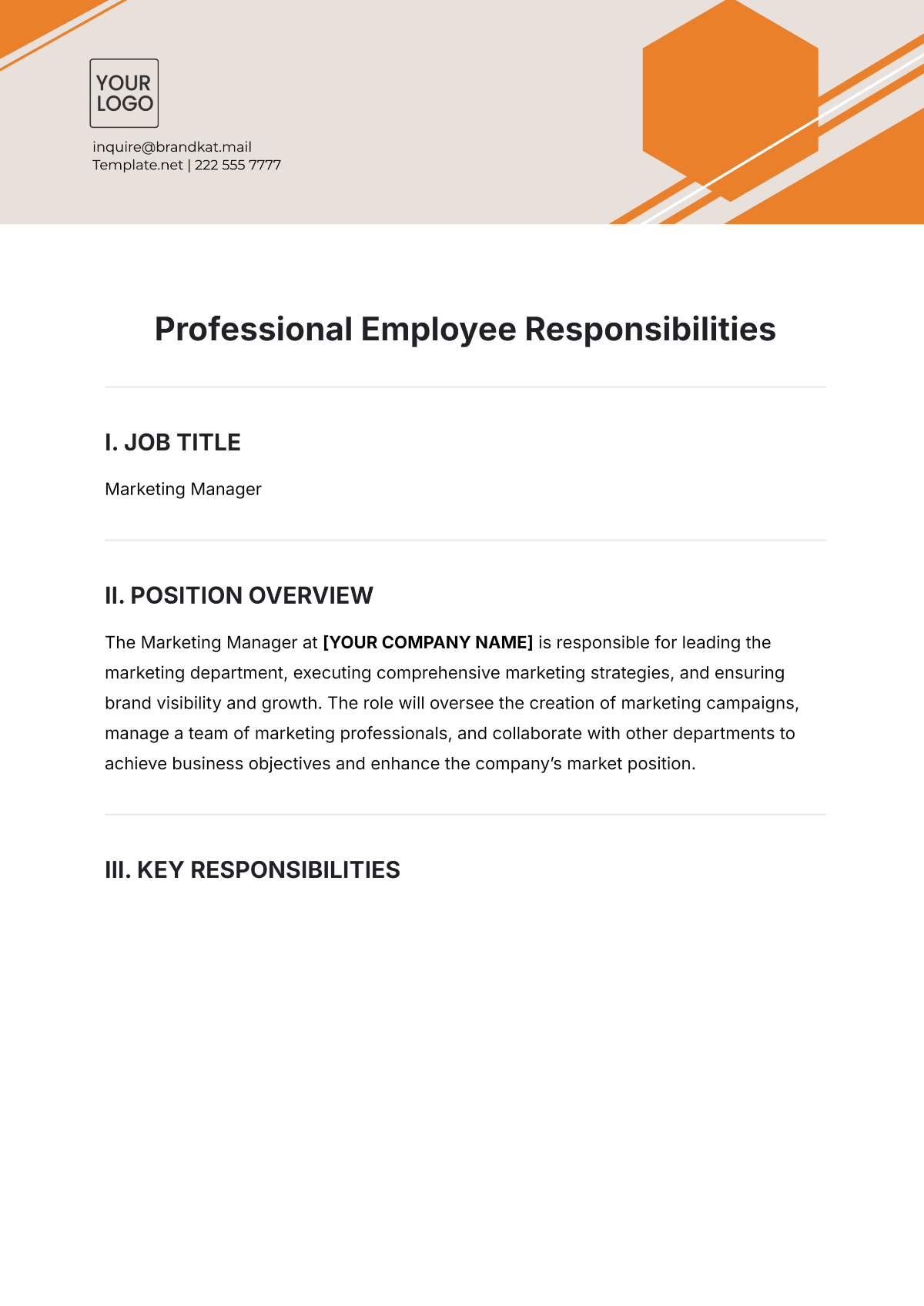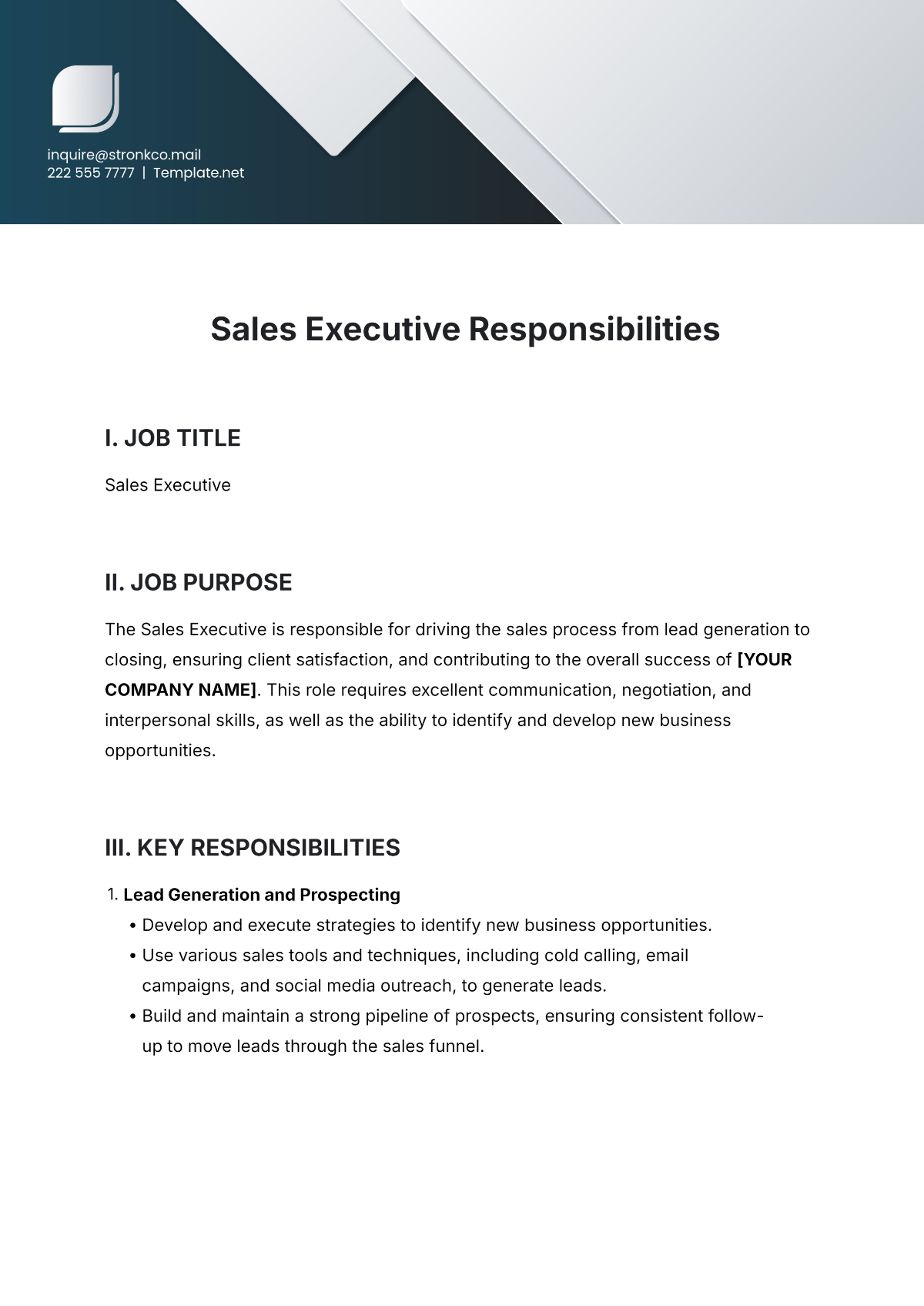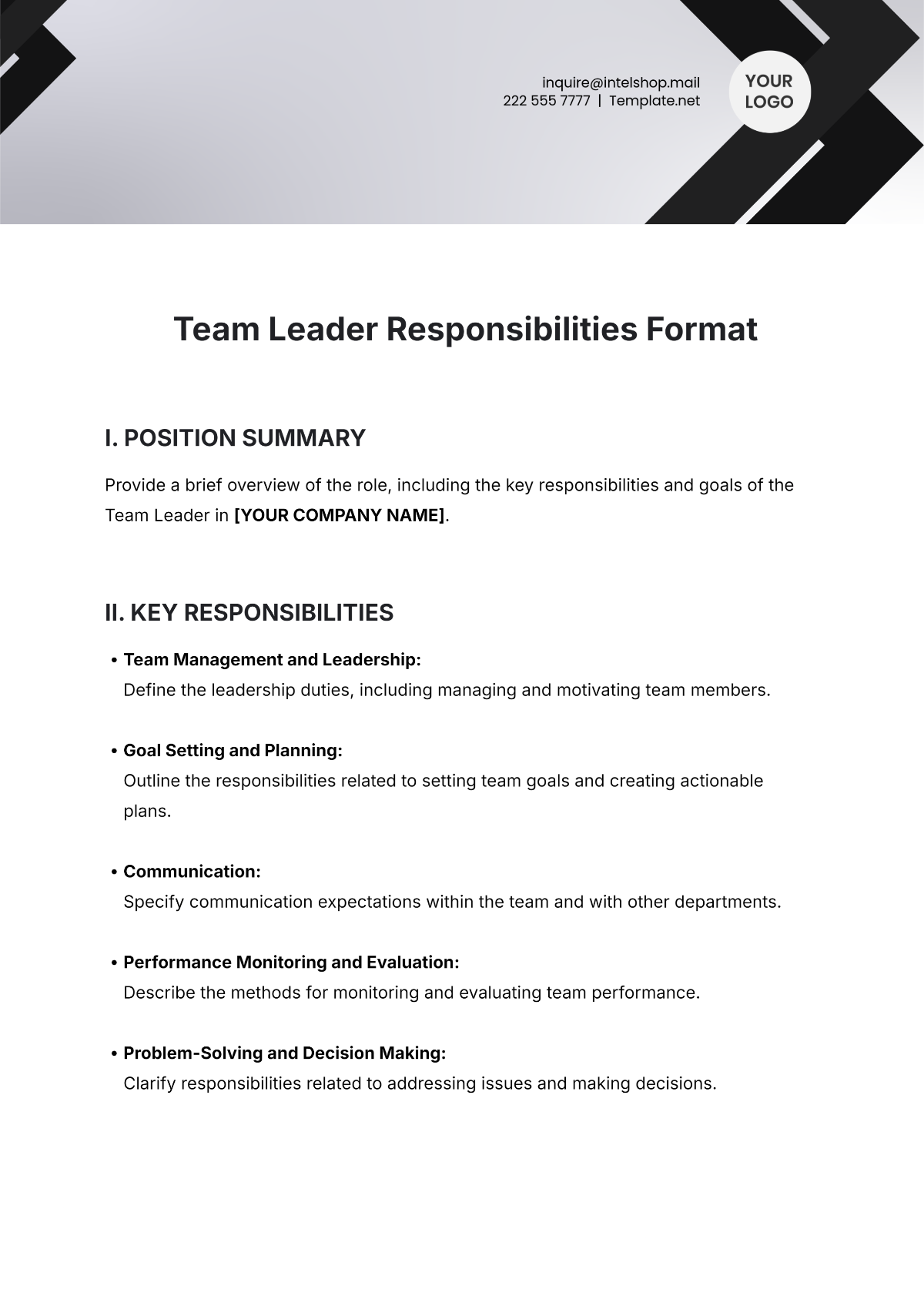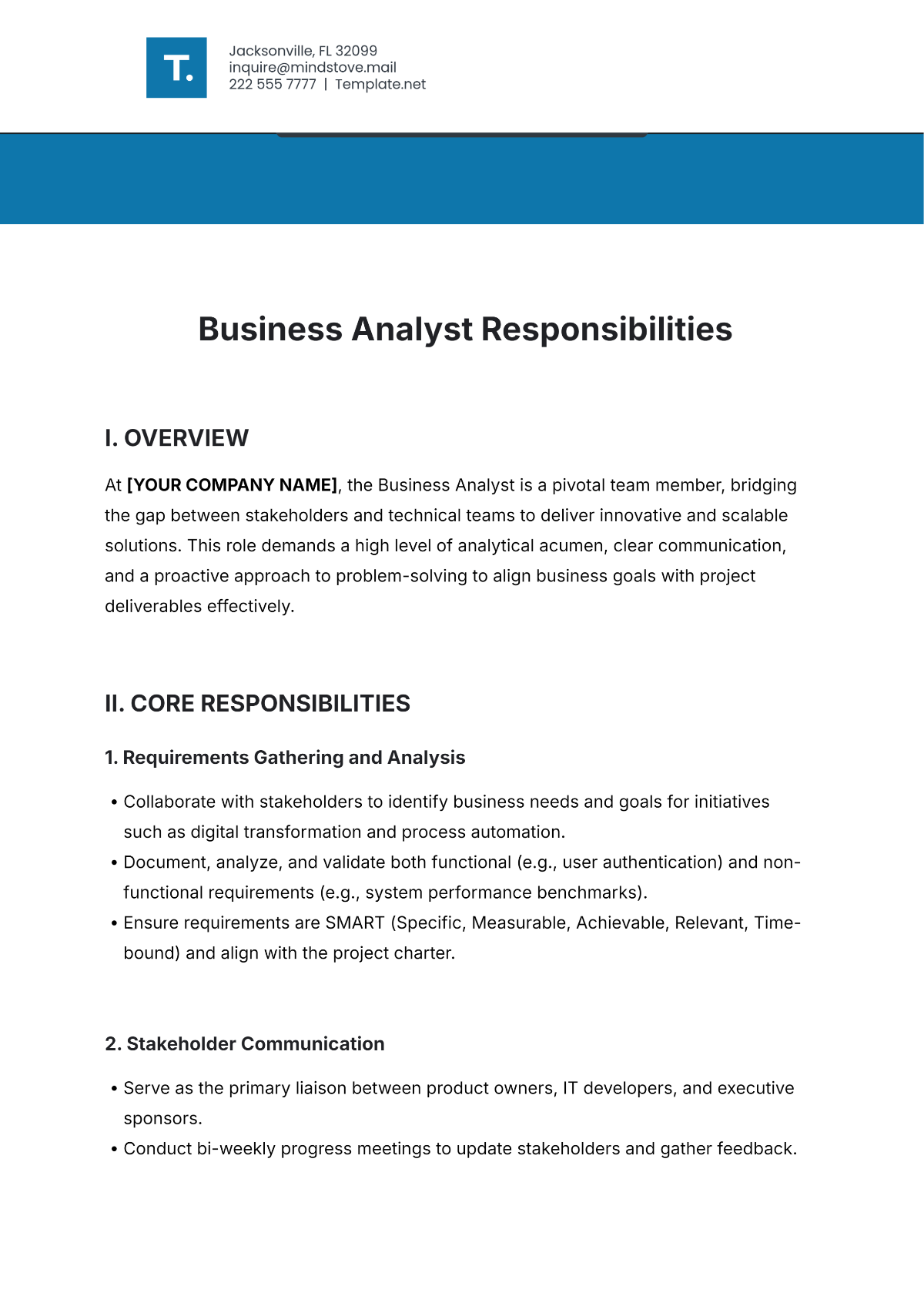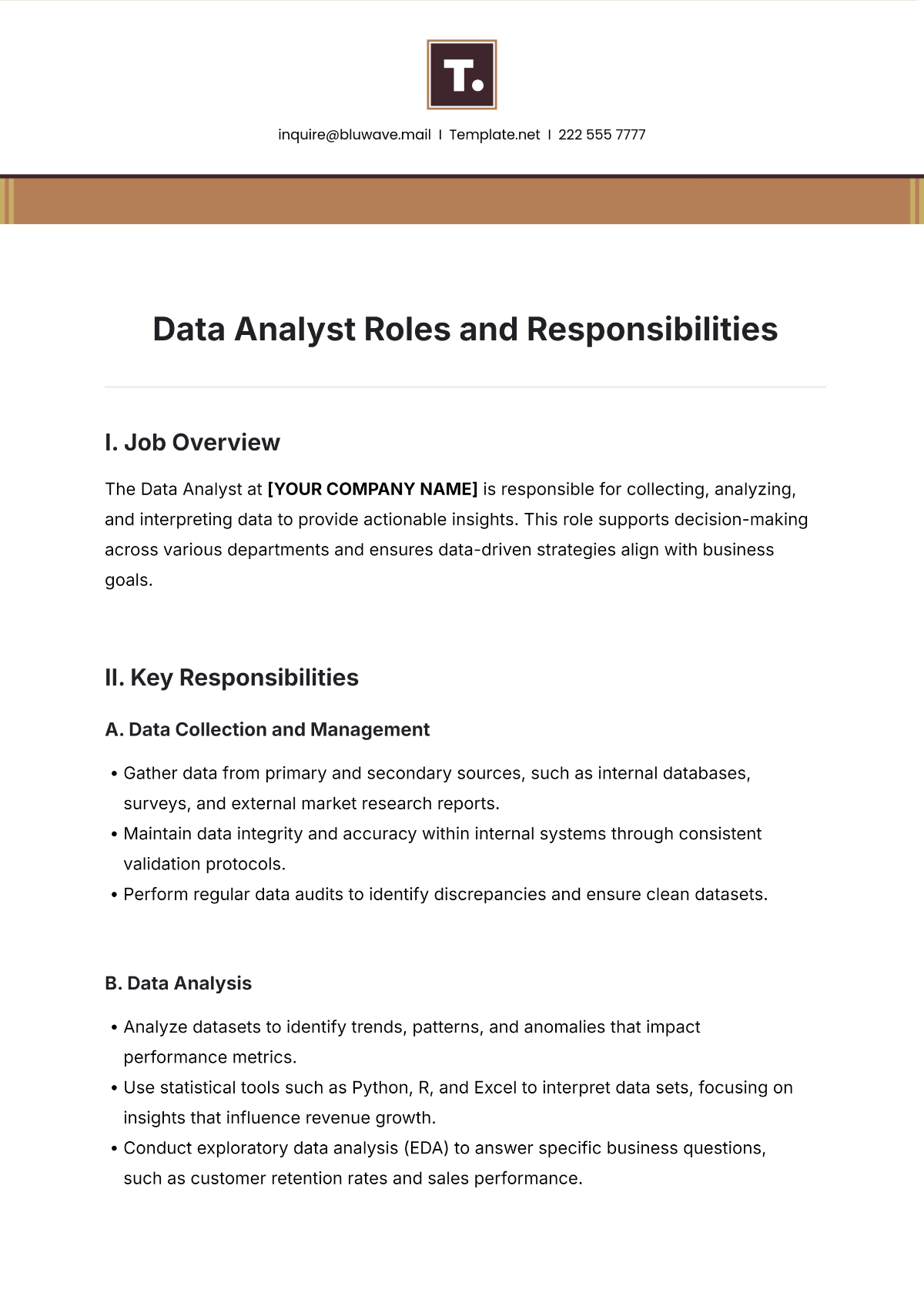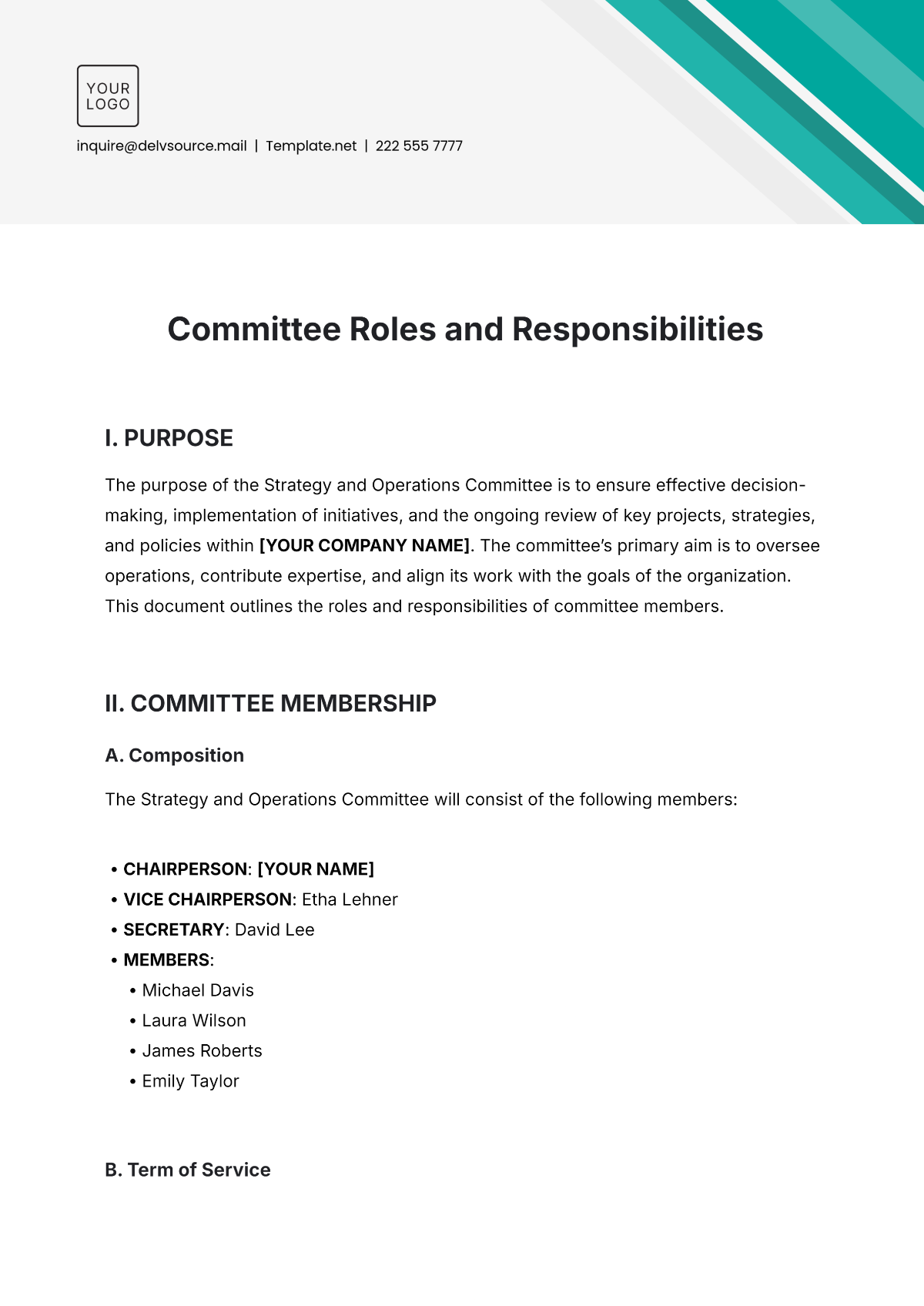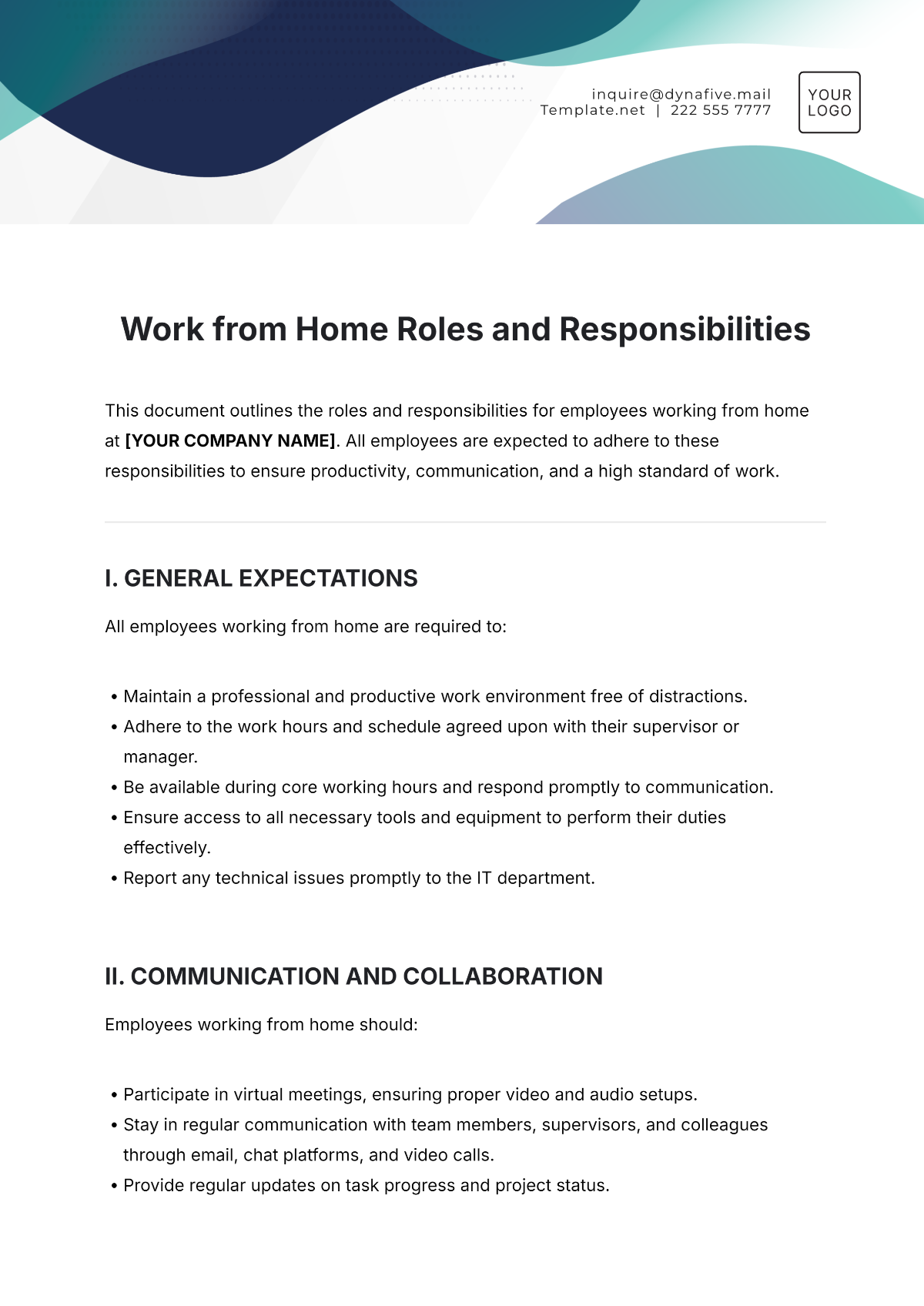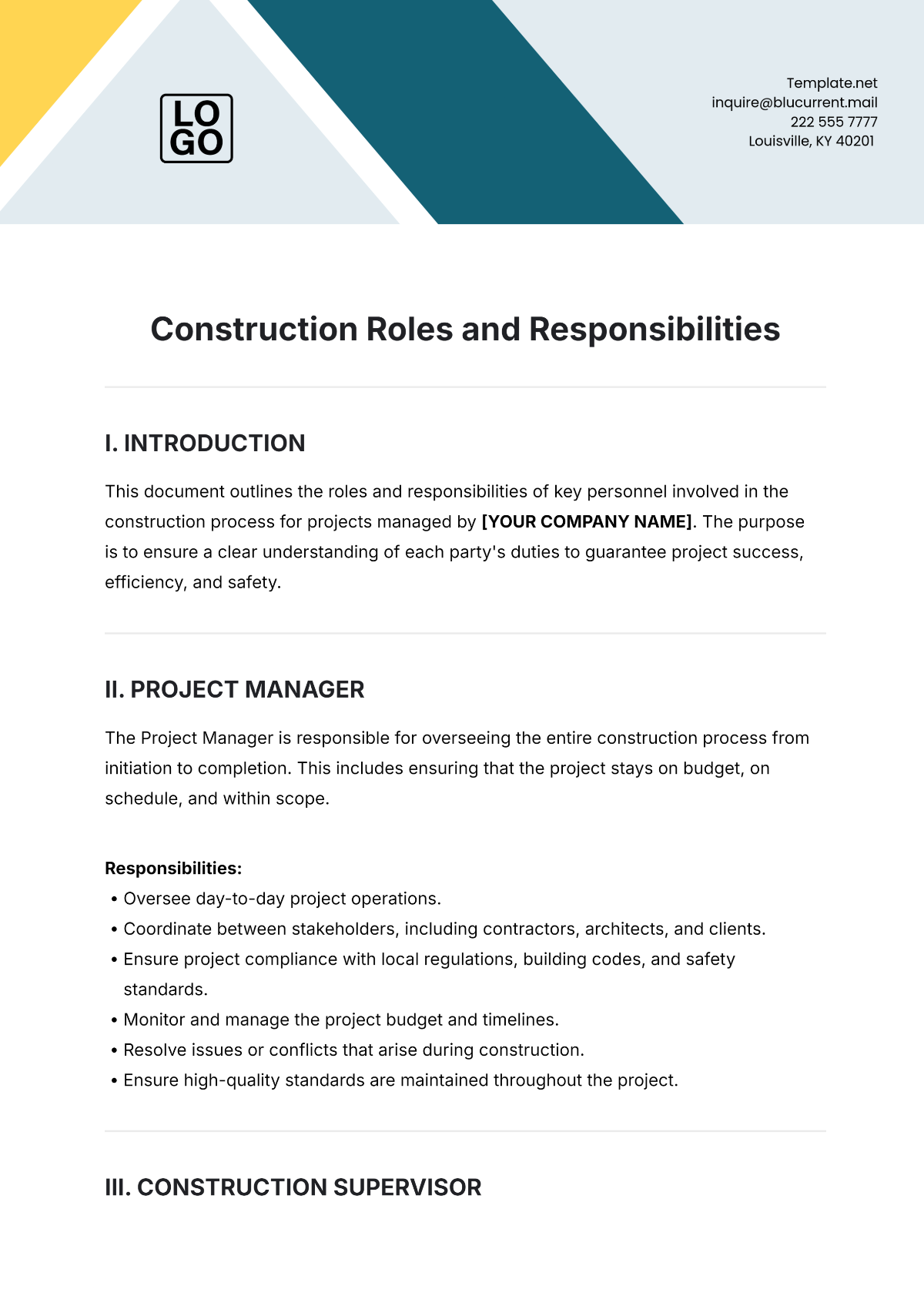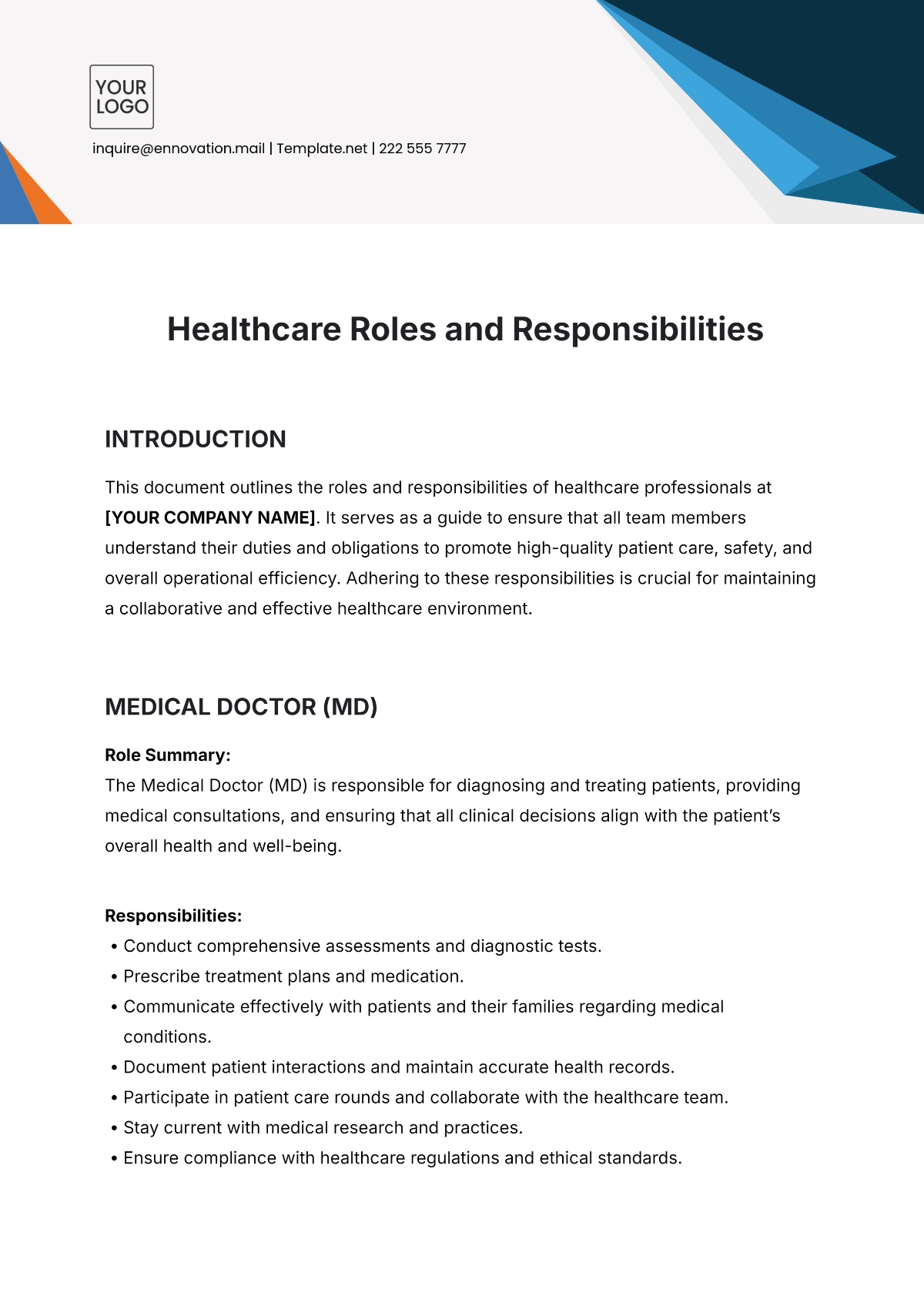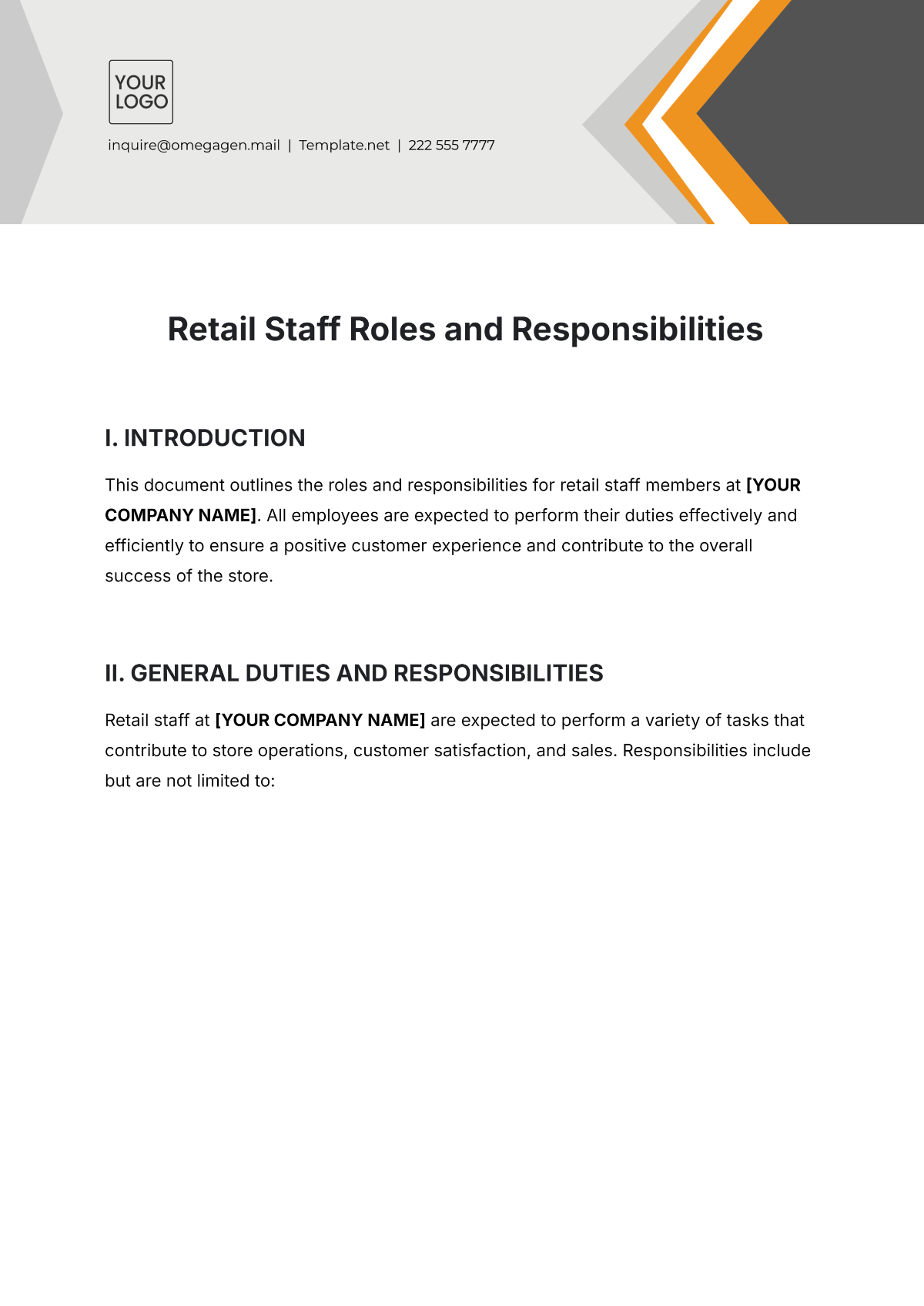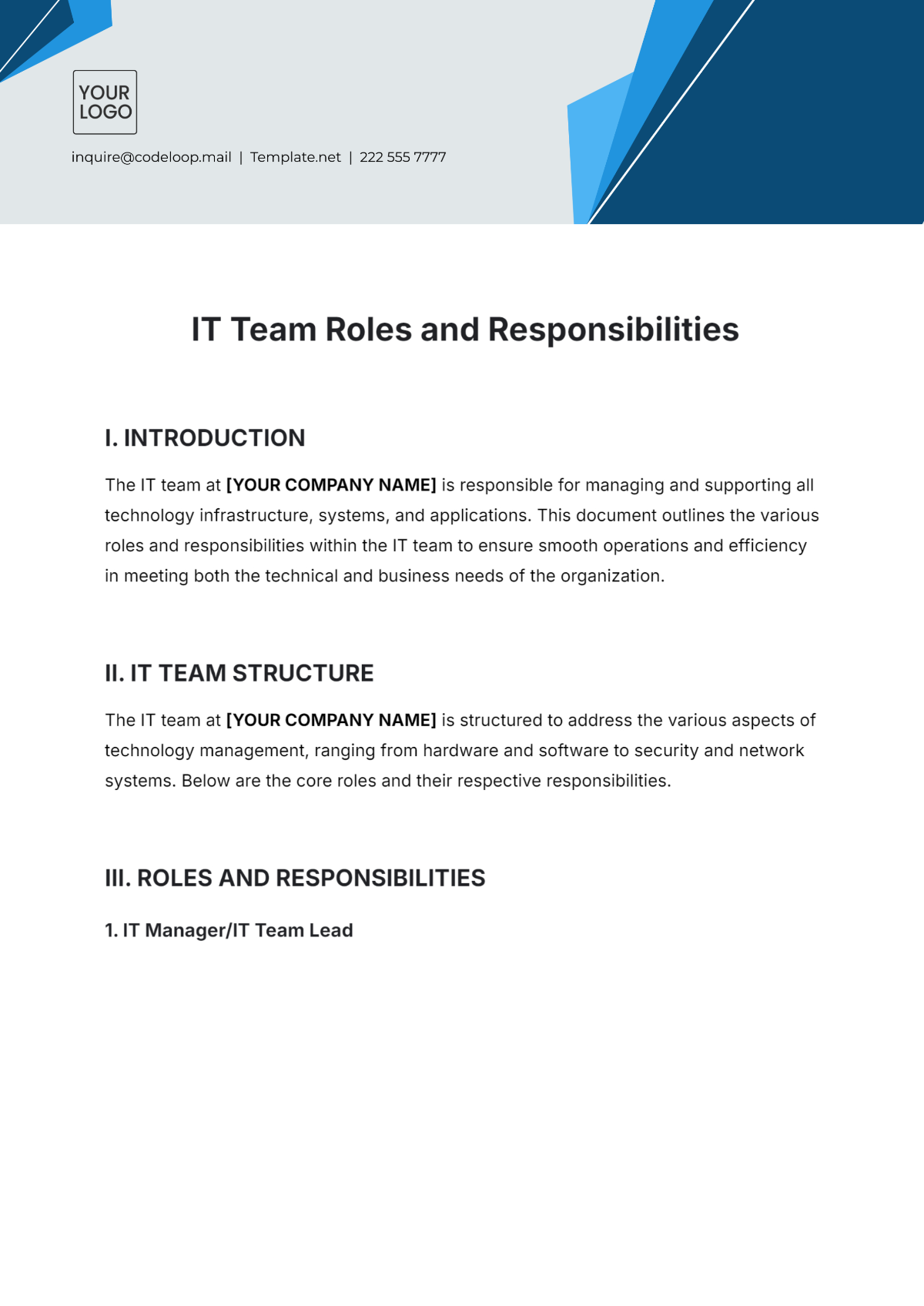Project Team Roles and Responsibilities
[YOUR COMPANY NAME] | [YOUR COMPANY ADDRESS]
I. PROJECT SPONSOR
Responsibilities:
Act as the ultimate decision-maker and project champion.
Secure necessary funding and resources for project success.
Provide strategic guidance and remove organizational barriers.
Approve major deliverables and changes to project scope.
Regularly review progress to ensure alignment with organizational goals.
Project Sponsor Name: Jean Harris
II. PROJECT MANAGER
Responsibilities:
Plan, execute, and close the project while ensuring it meets defined objectives.
Develop and maintain the project schedule, budget, and scope.
Lead and manage the project team, ensuring accountability for tasks.
Communicate regularly with stakeholders and team members.
Identify and mitigate risks proactively.
Project Manager Name: [YOUR NAME]
III. TEAM MEMBERS
Responsibilities:
Execute tasks assigned by the project manager to achieve deliverables.
Collaborate with other team members to ensure smooth workflows.
Provide regular updates on progress and challenges.
Contribute expertise and skills specific to their roles.
Participate in project meetings and reviews.
Team Member Names: Olivia Martinez, James Patel, Emily Chen
IV. SUBJECT MATTER EXPERT (SME)
Responsibilities:
Provide specialized knowledge and advice relevant to the project domain.
Support the team by addressing complex or technical issues.
Ensure that deliverables meet industry standards and best practices.
Assist in training team members, if necessary.
Subject Matter Expert Name: Dr. Robert Klein
V. STAKEHOLDERS
Responsibilities:
Offer input to shape the project's goals and outcomes.
Review progress updates and provide feedback.
Support the project by advocating for its success.
Participate in decision-making when consulted.
Stakeholder Names: Laura Bennet, Tom Sanchez
VI. QUALITY ASSURANCE (QA) SPECIALIST
Responsibilities:
Develop and implement quality standards for project deliverables.
Conduct regular testing and validation to ensure compliance.
Identify and resolve issues related to quality control.
Provide detailed reports on quality performance metrics.
QA Specialist Name: Andrea Lopez
VII. COMMUNICATIONS LEAD
Responsibilities:
Develop a comprehensive communication plan for the project.
Ensure consistent messaging among stakeholders.
Disseminate updates, reports, and announcements to relevant parties.
Manage any public-facing communications, if applicable.
Communications Lead Name: David Kim
VIII. IT SUPPORT OR TECHNICAL LEAD
Responsibilities:
Provide technical infrastructure and software support for the project.
Ensure systems are configured and maintained to meet project needs.
Troubleshoot technical issues that arise during the project.
Offer recommendations for technology improvements.
Technical Lead Name: Sofia Rivera
IX. ADMINISTRATIVE SUPPORT
Responsibilities:
Manage documentation and ensure records are accurate and accessible.
Schedule meetings, prepare agendas, and record minutes.
Support the project manager and team with logistical needs.
Monitor deadlines and ensure administrative processes run smoothly.
Administrative Support Name: Kevin Wu

